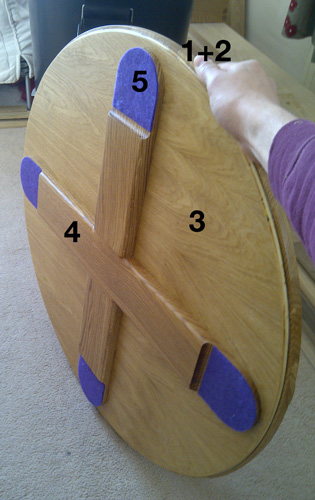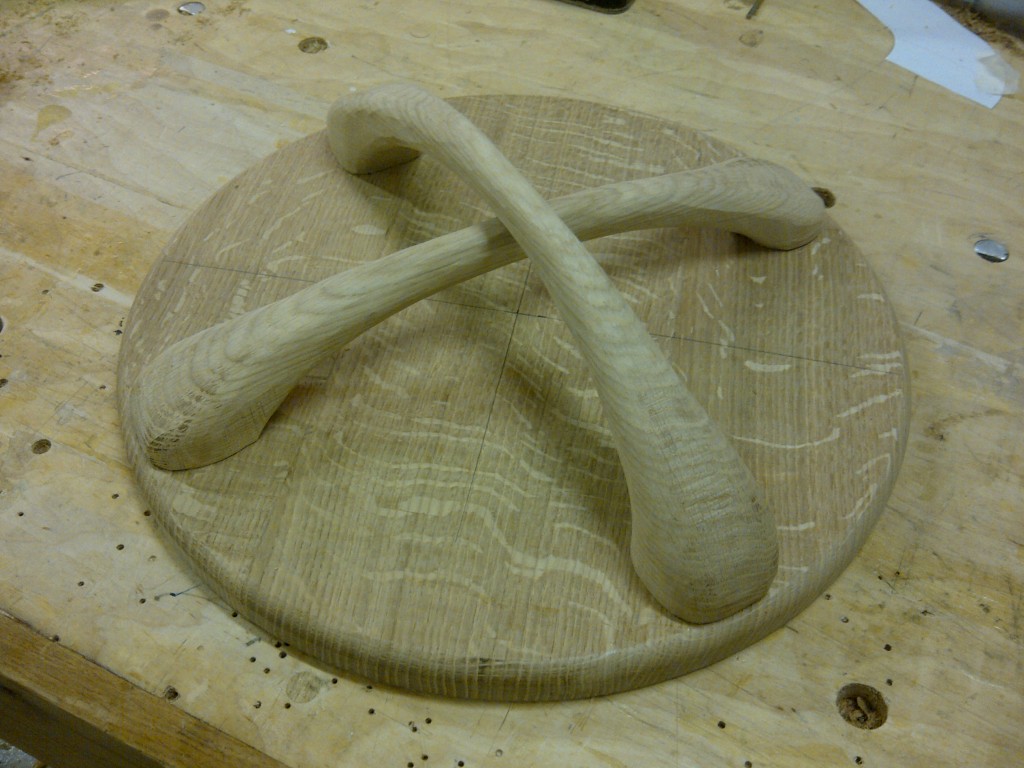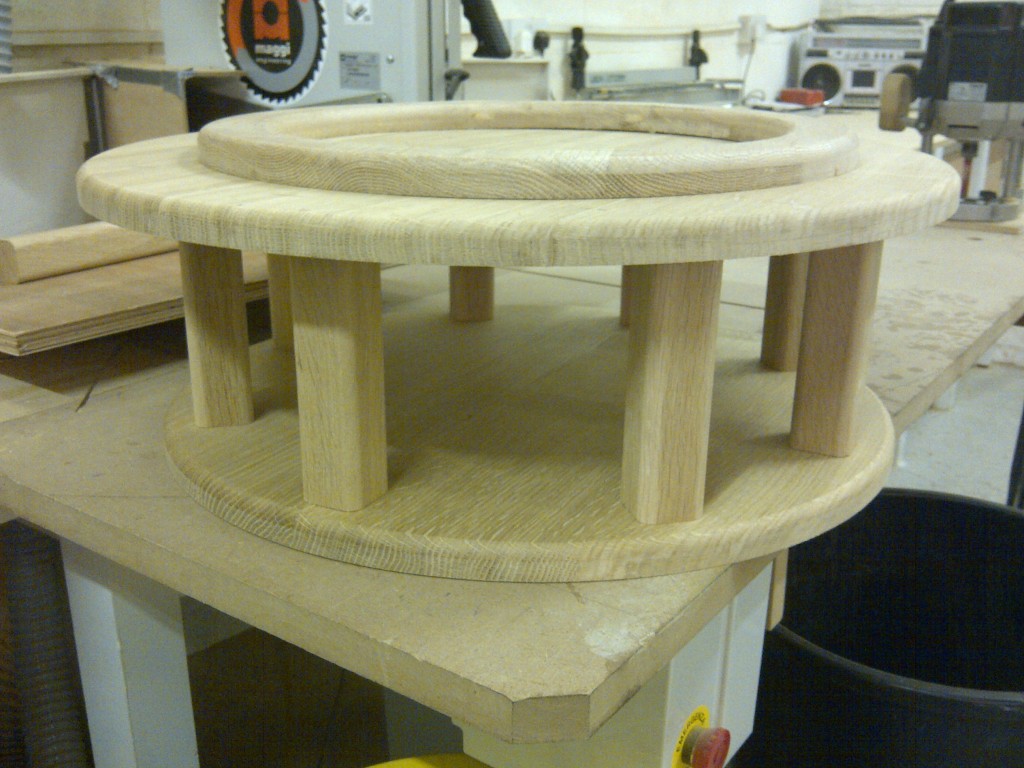BLOG.
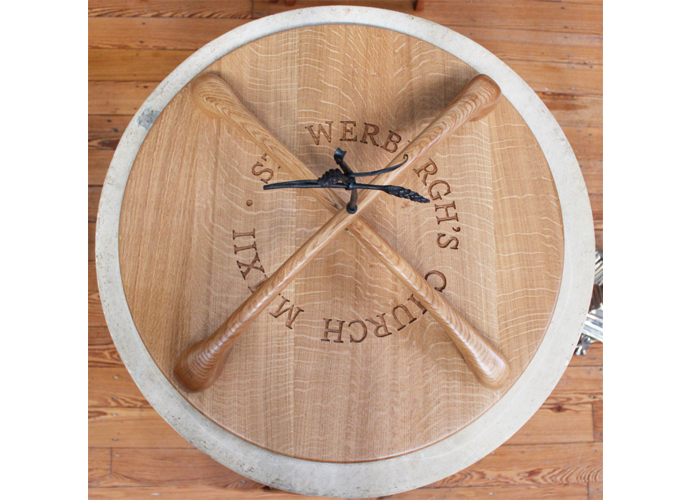
Font and Holy Water Tops: Hugh’s Photo Diary
28th May 2012
In the last year, I’ve completed a number of ecclesiastical joinery and cabinetry projects for a church in Chester and I thought I’d write a piece about the most interesting one. I really like doing ecclesiastical woodwork because it requires a mix of careful design, sympathetic detailing, and there’s always an interesting construction process.
The commission to make a set of new tops for a font and holy water vessel, as well as a plinth for the holy water, was a real gem and one of the most challenging constructions to detail. This is because, by the nature of the project, the tops sit above bowls of standing water. Moisture movement is the biggest challenge in solid hardwood cabinetry, because the timber expands and contracts at a higher rate across the grain as opposed to along it. There are lots of ways to detail around this movement, but the font and holy water tops were made more complex by the fact that the timber would be exposed to moisture only on one side. The risk here was that the timber would not expand evenly but cup dramatically as the underside, facing the water, expanded and the top side did not.
After doing a bit of testing, I incorporated 5 details which would help to combat the moisture movement. There’s a photo below which is numbered to show the different techniques:
1. The circular board which forms the main body of each top is constructed from quarter-sawn boards. Quarter-sawing is a way of cutting up a log so that the boards you get out are more dimensionally stable with fluctuations in moisture. Quarter-sawing is a bit beyond the scope of this post, but if you’d like to find out more, check out this blog post I found on the subject
2. Every board of timber has a predisposition to cup in one direction over another when exposed to fluctuations in moisture. This can be combated by placing boards with opposite cupping tendencies next to each other. This way, if the panel moves, it will create a slight wave across it’s width, rather than a huge cup. Again, find out more here…
3. The under side of the panel is protected from the moisture with a sheet of oak faced ply. Ply wood is made from thin sheets of timber with each sheet orientated at 90 degrees to the previous layer. This makes it very dimensionally stable, and so largely unaffected by moisture. (Putting this barrier in place was the only way to prevent moisture ingress into the solid panel happening over time.)
4. A cross-brace of timber was added under the ply which would restrain the timber if it started to cup. It’s usually a bad idea to mechanically restrain timber as, if the pressure gets to much, it’ll simply crack. In this instance, however, the brace was connected in such a way that it allowed a little movement, but would keep the top flat.
5. The cross-brace serves the extra function of spacing the top away from the vessel and so allows air movement across the surface of the water. This ventilation is key to preventing the void between the timber and water from becoming saturated and impregnating the wood.
The part which I most enjoyed was making the handles. They are curved organic shapes without a straight line in them, which is a difficult thing to make accurately. Each handle started as a block of oak which was cut into an arch on the bandsaw. The sides were then tapered towards the centre, again on the bandsaw, so the shape of the handle was roughed out.
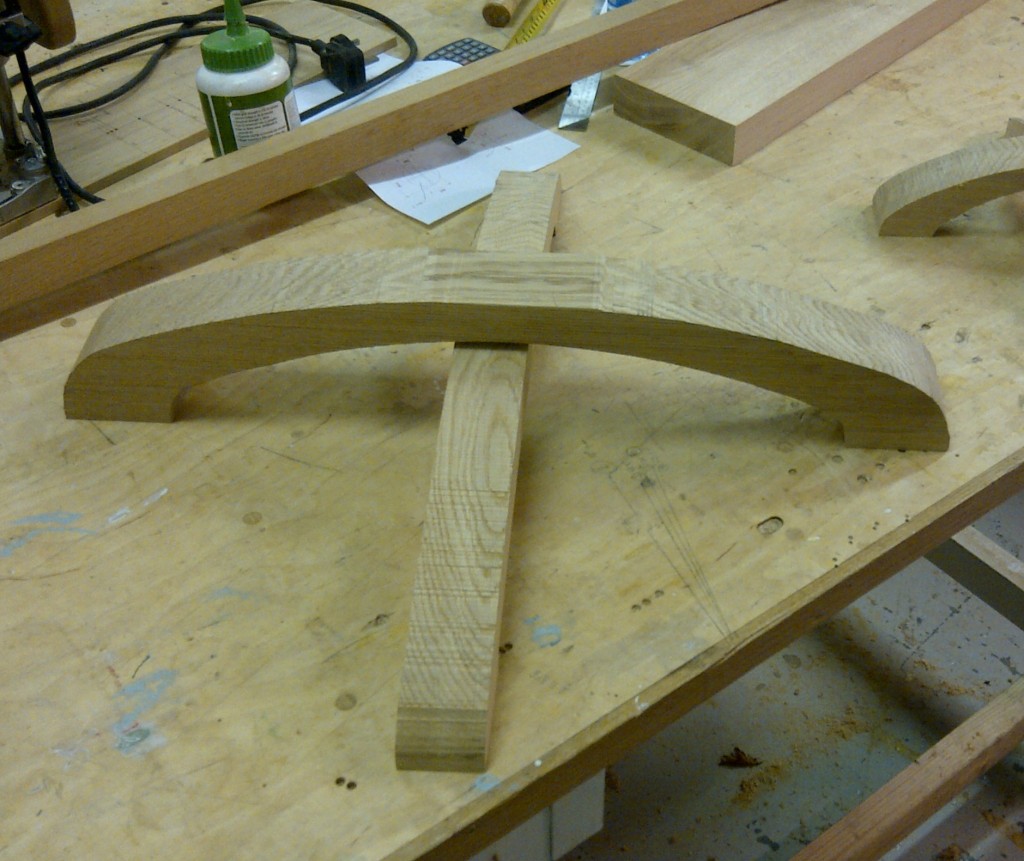
The handles were crafted from a thick piece of oak, cut first on the bandsaw, then the edges sanded on the linisher, and finally sanded by hand until smooth.
Next, each handle was sanded on the linisher to round the corners and make the curved handles more organic and tactile. When the handles were smooth and even, I hand-sanded them through to around 400-grit and oiled them with finishing oil.
A highlight of the project was a set of two beautiful wrought iron crosses made by Pete Wilson at Bartington Forge. The crosses were formed from ears of wheat, an allusion to the Cheshire county crest, and fire-welded together – a very traditonal method of iron-working.

The wrough-iron crosses were a highlight of the project. (Ironwork by Pete Wilson, at Bartington Forge in Cheshire)
The final part of the project was to make the plinth which the Holy Water vessel would sit on. The vessel, which was already in use by the church, sat too low next to the stone font, so I designed a short plinth which would raise it up around 300mm. The detailing of the plinth is simple, and takes its cues from the existing font.
And here is the finished project. It was a really challenging one to get right, but we were well pleased with the results. If you’d like to see more photos of this project, check out it’s page on the HM HandMade website here…
If you would like to know more about the bespoke handmade furniture and hardwood interiors I make at HM HandMade, check out the website at www.hmhandmade.co.uk, or call Hugh on 07789 768 302.
Handmade ecclesiastical cabinetry; Bespoke ecclesiastical joinery; Handmade church cabinetry; Bespoke Church furniture; Handmade font top; Bespoke font lid; Bespoke handmade holy water plinth; Handmade bespoke ecclesiastical cabinetry joinery and carpentry.
